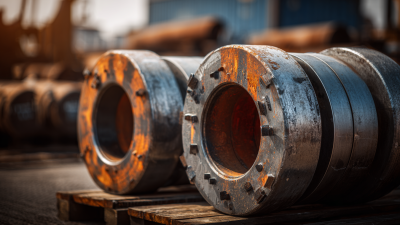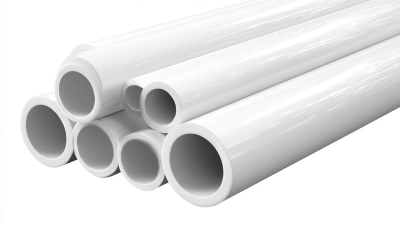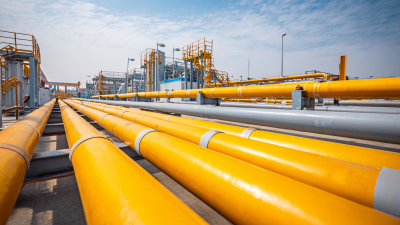Email Id: sale@adctooling.com
In the industrial sector, the selection of appropriate fittings and valves is crucial for ensuring operational efficiency and safety. According to a recent market analysis by Grand View Research, the global valves market is projected to reach USD 88.08 billion by 2025, driven by increasing demand across various applications, including oil and gas, water treatment, and manufacturing industries.

The right fittings and valves not only affect the fluid dynamics and pressure management within systems but also play a significant role in reducing maintenance costs and improving longevity. As industries strive to enhance productivity while adhering to stringent regulatory standards, understanding the benefits of different fittings and valves becomes essential for optimizing processes and minimizing downtime.
In this blog, we will explore how to choose the right fittings and valves for your industrial applications to reap these benefits and ensure seamless operations.
In the realm of industrial applications, understanding the various types of fittings and valves is crucial to ensuring optimal performance and safety. Different sectors, such as piping systems, power cable television, and coatings and adhesives industries, employ specific fittings and valves suited to their unique requirements. For instance, piping applications necessitate robust fittings that can withstand high pressure and corrosive environments, whereas power cable television might rely on specialized valves designed to manage signal transmission efficiently.
Regional insights show varied market dynamics, greatly influenced by economic conditions. In Latin America, fluctuating economies, like those in Argentina and Venezuela, pose challenges for industrial investment and consumer purchasing power, directly impacting the liquefied petroleum gas valve and fittings market. On a broader scale, trends in urbanization and sustainability are driving growth in North America's piping fixtures and fittings sector, as the demand for modern bathroom and kitchen installations surges. Such market developments underscore the necessity of selecting the right fittings and valves to meet the evolving demands of diverse industrial applications.
When selecting fittings and valves for high-pressure industrial applications, it’s crucial to understand the specific requirements and standards of your operations. Key factors include material compatibility, pressure ratings, and temperature tolerances. The right choice can significantly enhance system reliability and safety, which is paramount in high-pressure environments.
One vital tip is to prioritize fittings and valves made from materials that meet the regulatory standards pertinent to your industry. For critical applications, consider components made from corrosion-resistant materials that can withstand extreme conditions. Additionally, investing in high-quality seals and gaskets is essential to prevent leaks, as even minor failures can lead to catastrophic incidents.

Another aspect to consider is the size and configuration of fittings. Ensure that the selected fittings allow for smooth fluid flow and minimize turbulence, which can impact system efficiency. Regular maintenance and inspection of these components are also recommended to ensure their longevity and proper function under high pressure, ultimately leading to more sustained performance and reduced downtime.
When selecting fittings and valves for industrial applications, the choice of materials plays a crucial role, particularly in chemical processing industries. The industry's growing demand for high-performance materials has intensified the focus on corrosion-resistant, wear-resistant, and high-temperature materials. These "three-resistant" qualities are essential for ensuring the longevity and reliability of fittings and valves in challenging environments. Companies that prioritize research and development in these areas are better positioned to meet the rigorous requirements of modern industrial applications.
In recent reports, the Indian gas valve market is projected to experience significant growth, driven by expansion in sectors such as oil and gas, power generation, manufacturing, and pharmaceuticals. This surge underscores the importance of material selection, as the performance and durability of valves directly impact operational efficiency and safety. By investing in advanced materials science, manufacturers can enhance their competitive edge, leading to more robust and efficient solutions in an ever-evolving industrial landscape. As industries continue to expand globally, the role of high-quality materials in valve selection will remain pivotal.
| Material | Common Applications | Temperature Range | Pressure Ratings | Corrosion Resistance |
|---|---|---|---|---|
| Stainless Steel | Oil & Gas, Chemical Processing | -50°C to 800°C | Up to 2000 psi | Excellent |
| Carbon Steel | Water Treatment, HVAC | -29°C to 425°C | Up to 1500 psi | Good |
| Bronze | Marine Applications, Plumbing | -20°C to 200°C | Up to 1000 psi | Very Good |
| PVC | Chemical Handling, Water Transport | -15°C to 60°C | Up to 150 psi | Good |
| PTFE | High-Purity Applications, Food & Beverage | -200°C to 260°C | Up to 150 psi | Excellent |
When selecting industrial pipe fittings, understanding how size and compatibility influence your choices is crucial. According to a recent report from the Global Pipe Fittings Market Analysis, the demand for accurately sized fittings has increased by approximately 15% over the last three years, driven by industries needing precision and reliability in their operations. Incompatible fittings can lead to leaks, system failures, and increased maintenance costs, which may account for upwards of 20% of operational expenses in industrial settings.
Compatibility extends beyond simple dimensions; it involves material considerations as well. For instance, the American Society for Testing and Materials (ASTM) specifies that certain materials are only suitable for specific applications. A study found that using mismatched materials can reduce the lifespan of fittings by as much as 30%. Therefore, ensuring that the size, type, and material of fittings and valves align with the requirements of your specific application is essential to optimize performance and ensure the longevity of your systems.

In recent years, the fittings and valves market has witnessed significant innovations aimed at enhancing performance efficiency, driven by the growing demand for reliable industrial applications. According to a report by Global Market Insights, the fittings and valves market is expected to exceed USD 90 billion by 2027, with a compound annual growth rate (CAGR) of over 4.5% between 2021 and 2027. These innovations include advancements in materials, such as the development of high-performance polymers and corrosion-resistant alloys that contribute to improved durability and reduced maintenance costs.
Moreover, the incorporation of smart technology is revolutionizing the industry. For instance, the deployment of IoT-enabled valves allows for real-time monitoring and control, significantly enhancing system efficiency. A recent analysis from Allied Market Research indicates that the smart valve market alone is projected to reach USD 7.5 billion by 2025, a clear testament to the shift towards automation and data-driven decision-making processes in industrial settings. As industries continue to evolve, selecting the right fittings and valves equipped with such innovations will be crucial for optimizing operational performance and ensuring long-term sustainability.



